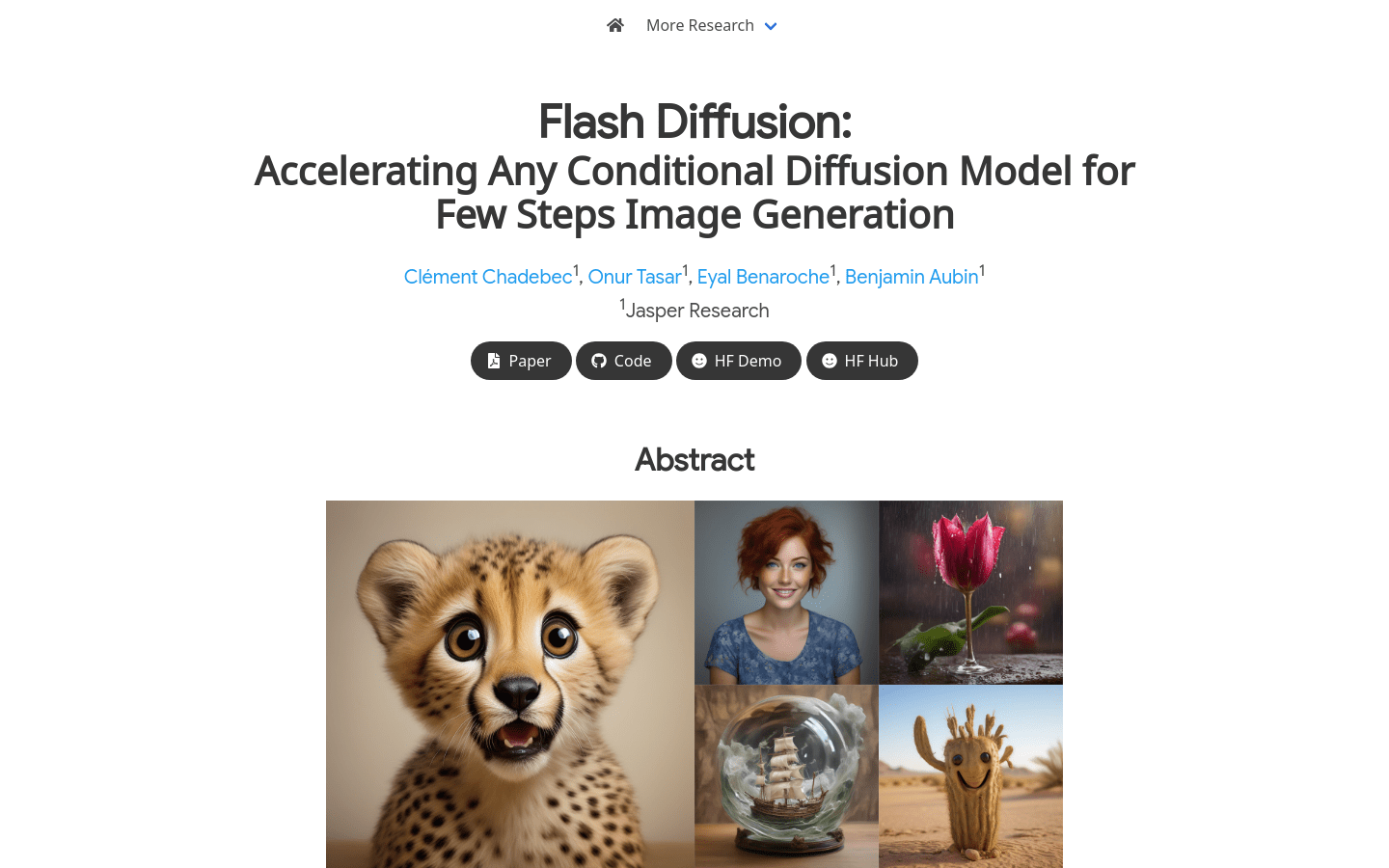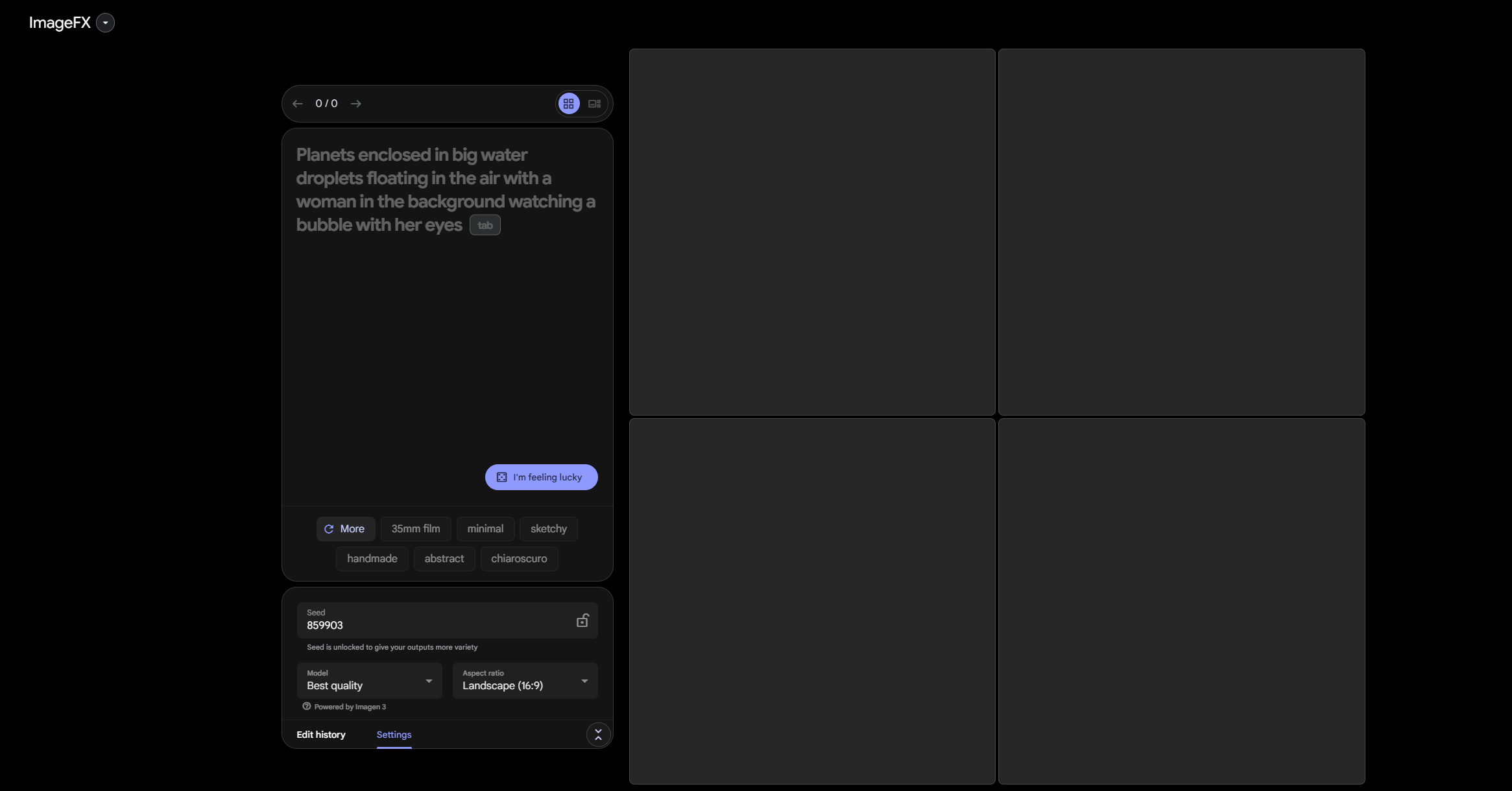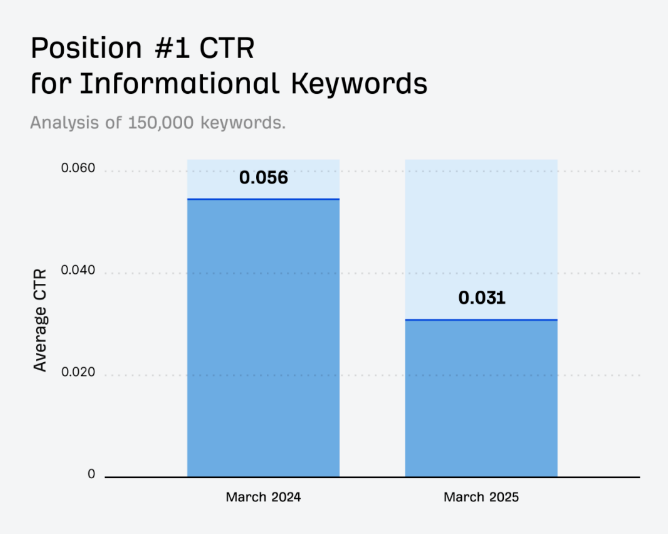
Flash Diffusion is an efficient image generation model that generates high-quality images in fewer steps and is suitable for a variety of image processing tasks, such as text-to-image, inpainting, super-resolution, etc. The model achieves state-of-the-art performance on the COCO2014 and COCO2017 datasets while requiring less training time and fewer parameters.
Demand group:
"The target audience is researchers and developers who need to produce high-quality images quickly, especially in the areas of image generation, editing and enhancement."
Example of usage scenario:
Use Flash Diffusion for text-to-image conversion to quickly transform descriptive text into visual images.
In artistic creation, Flash Diffusion is used to repair images and fill in missing parts.
In media production, use Flash Diffusion to swap faces and create new visual effects.
Product features:
Fewer steps for image generation, reducing computing resource consumption
Suitable for a variety of image processing tasks, such as text to image, inpainting, etc.
Use different backend models such as UNet based denoiser and DiT model
Improving sample quality through adversarial targets and distribution matching distortion loss
During the training process, the sampling time steps are drawn from an adaptable distribution to help the student model target specific time steps.
Usage tutorial:
1. Visit the official GitHub page of Flash Diffusion to understand the basic information and usage conditions of the model.
2. Download and install the required dependent libraries and tools to ensure that the environment is configured correctly.
3. According to the specific image generation task, prepare the corresponding input data, such as text description, damaged image, etc.
4. Run the Flash Diffusion model, enter data and specify generation parameters.
5. Wait for the model to generate results and perform post-processing as needed.
6. Analyze the quality of the generated images and adjust parameters based on feedback to optimize results.







